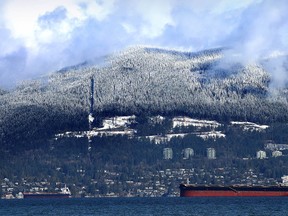Warm winters continue in B.C., with Vancouver 2°C above average last December

Vancouver’s warm winter weather is expected to spread throughout the province and continue at least through January.
“In the middle of January, we expect pretty warm and dry conditions over most of the province,” said Chris Doyle, a meteorologist with Environment and Climate Change Canada.
December on B.C.’s south coast was warmer than average, Doyle said.
“Generally, the province has been between one and two degrees Celsius above the long term average for nearly all the coast and most of most of the South,” he said.
December’s average temperature measured at the Vancouver International Airport was 5.9 degrees Celsius — two degrees warmer than the 30 year average from 1991 to 2020.
Temperatures hit a high of 12.9 degrees Celsius at one point in December, a few degrees below a temperature extreme of 14.9 degrees set on December 26, 1980.
While B.C.’s south coast had a warmer than normal December, Doyle said temperatures in northern B.C. were closer to normal and there was some cold air in the interior. Starting in early January “the whole province kind of warms up,” he said.
Doyle said things could change towards the end of the month, however.
“There may be a transition where more wintry weather will arrive down in the south coast, so a decrease in temperature, maybe the possibility of some snow, but we’re very uncertain about it right now,” he said.
He said the La Nina weather event that was forecast has been slow to materialize and is expected to be much weaker than originally forecast.
“It will be very weak. So we are not likely to see those more profound winter effects that we had earlier anticipated,” Doyle said.
La Nina is a global weather phenomenon typically known for producing colder, snowier winters. It appears roughly every three to five years and typically lasts one to two years.
Doyle said the Pacific isn’t expected to enter a La Nina state until the end of January and it will last until the end of March, an uncommonly short period.
“We did expect a cooler and somewhat snowier winter for B.C. a few months ago,” Doyle said.
“Up in the northeast, you have a very dry air mass. It warms much more easily than a wet one,” Doyle explained.
Longer-term forecasts do not show much change for either the south or the north of the province, with current projections showing warm winters in southern and coastal areas and “near-average” conditions in the north and the northeast.
“If we look a little bit further ahead, temperature for the spring — sort of April, May, June — our models are forecasting essentially a near-average condition for the entire province,” Doyle said.
With files from the Canadian Press.